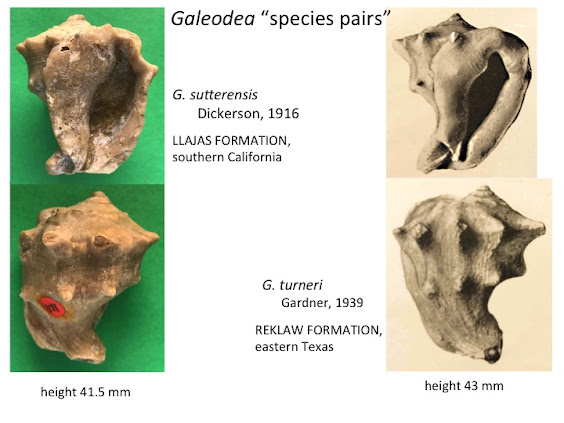A REMARKABLE EXAMPLE OF A SPECIES PAIR
Species pairs are two species that closely resemble one another in morphology and are similar in geologic age, yet these species can have lived in geographically far-apart areas.
An excellent example of a species pair are two species of the cassid warm-water, shallow-marine gastropod Galeodea. This genus lived only during the early through middle Eocene time. One species (shown on the right side of the following diagram) is Galeodea turneri Gardner, 1939, which lived during the early Eocene in eastern Texas. The other species (shown on the left) is Galeodea sutterensis Dickerson, 1916, which lived during middle Eocene (approximately 50 million years ago) in California.
Comparison of the close morphology of the front and back views of the east Texas G. turneri versus similar views of the California G. sutterensis.
The presence of these two species is indicative that the waters where they lived were once connected. During the time that they lived, there was an open connection between Texas and southern California. In addition, this connection extended up along the eastern seaboard area of North America, across the then much narrower Atlantic Ocean, and eastward into the Tethys Sea, including southern England and the Paris Basin, France. The Tethys Sea closed up following Eocene time when Africa and India collided with Eurasia.
Reference Cited:
Squires, R.L. 2019. Revision of Eocene warm-water cassis gastropods from coastal southwestern North America: Implications for paleobiogeographic distribution and faunal turnover. PaleoBios 36L1-22, figs. 1-5.


No comments:
Post a Comment